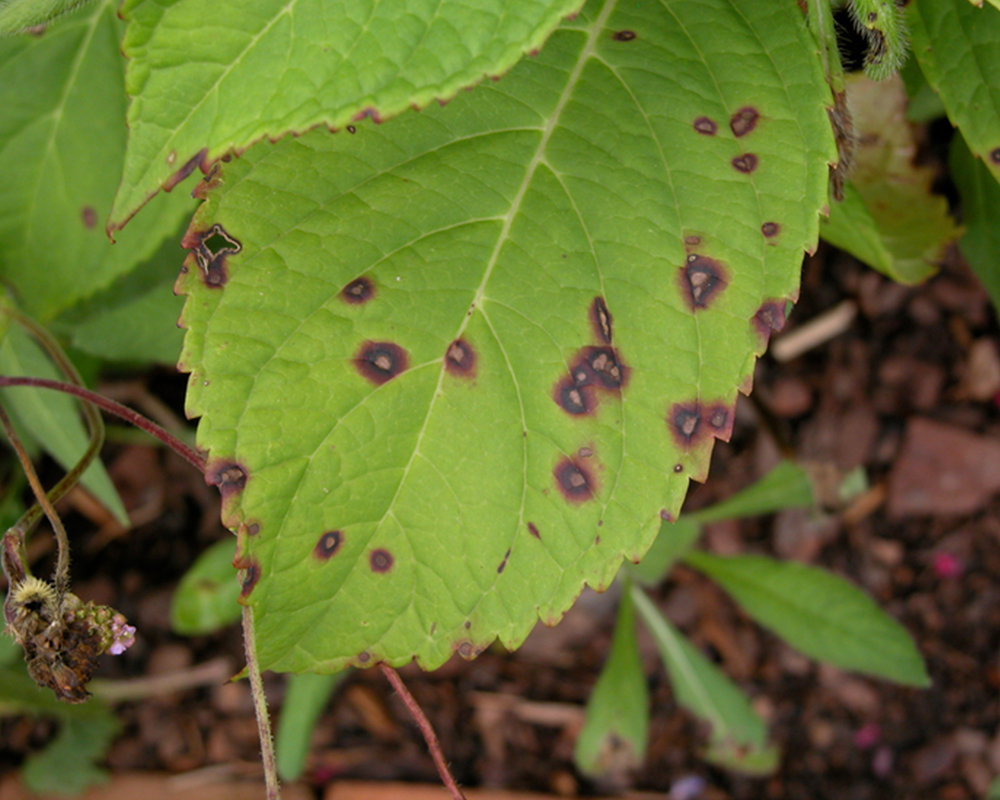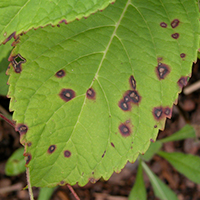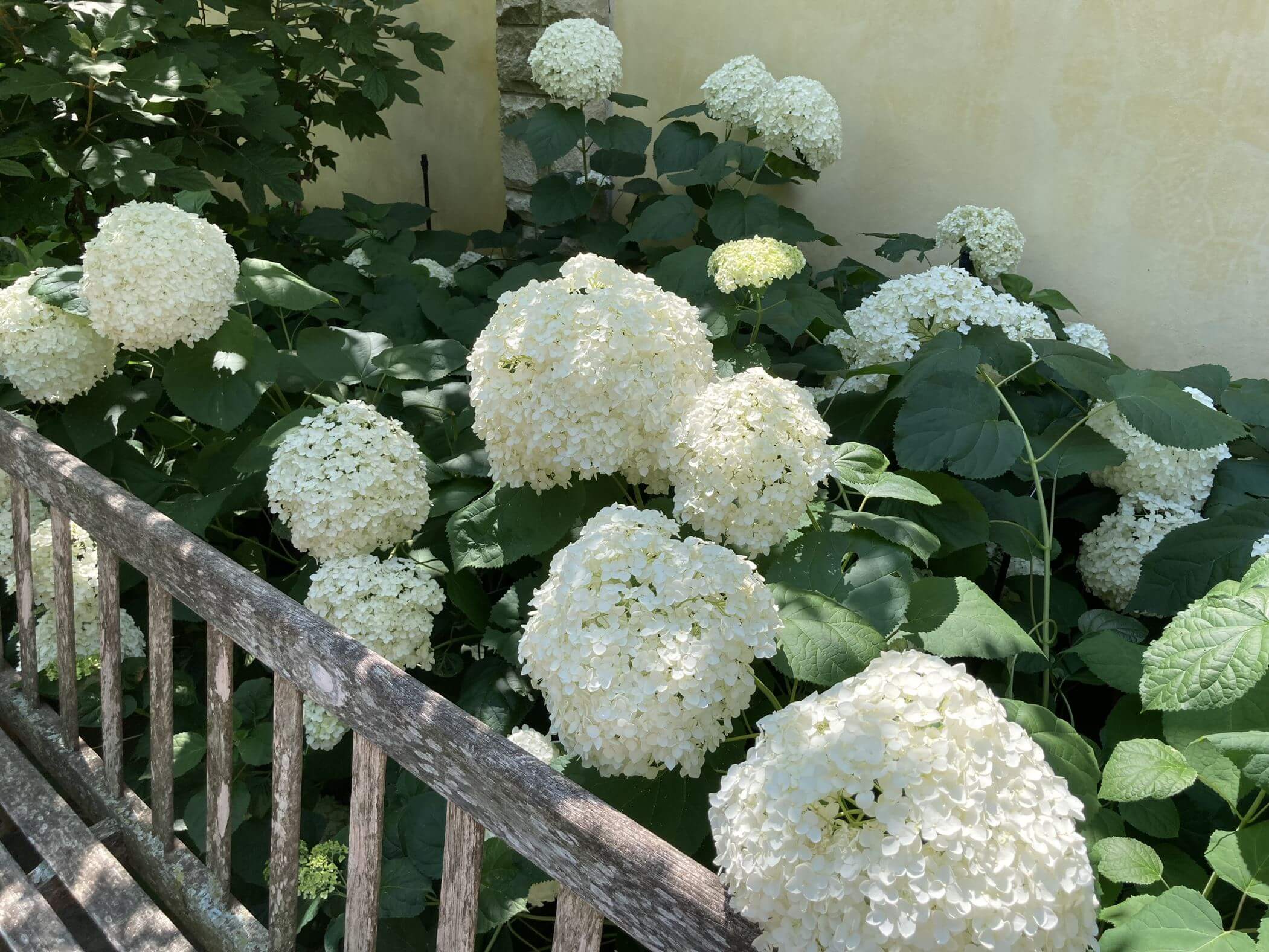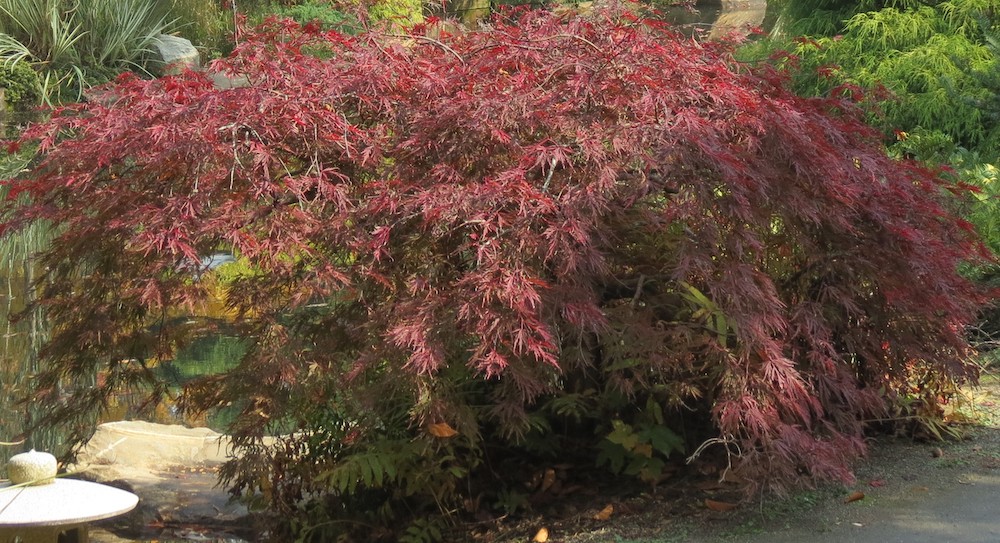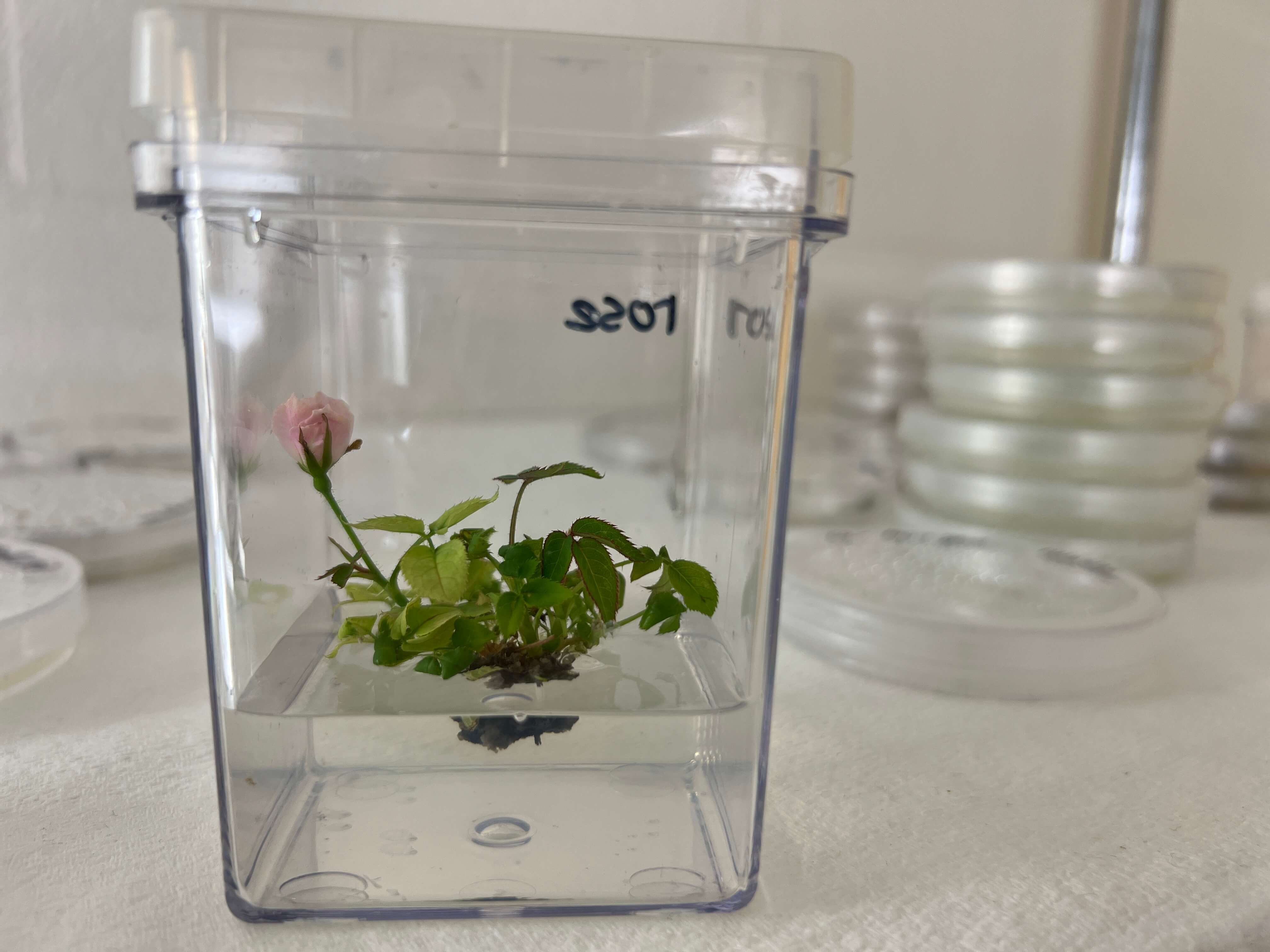With all of the rain that we’ve experienced this year, many fungal leaf spot diseases are active. Hydrangeas are particularly susceptible to several different leaf spot diseases that favor moist weather. Some of the most common diseases people ask about are known as Corynespora leaf spot and Cercospora leaf spot on bigleaf hydrangeas.
Many of the leaf diseases that are apparent in the fall are actually the result of infections that occurred in the spring. As the season progresses, these leaf spots begin to enlarge and become more noticeable. Late summer rainfall or overhead irrigation can perpetuate these diseases and lead to defoliation or the decline of infected plants. Leaves that remain wet for extended periods are more likely to develop spots.
Leaf spot symptoms usually start out on older leaves near the bottom of the plant and move upward later in the season. Corynespora and Cercospora are easy to recognize due to the dramatic purple lesions that form on the surface of the leaves. As these spots enlarge, they may become irregular in shape and develop a grayish center surrounded by purple margins. Eventually, the entire leaf may become a yellowish color. The fungus produces many spores in the center of each spot, which are easily spread by wind, splashing water, rainfall or irrigation.
Fungal leaf spots are generally not a major problem for hydrangeas beyond their aesthetic appearance. Although the disease rarely kills the plant, severe outbreaks over the course of multiple years can reduce plant vigor. Years that start off with a very wet spring will often see more leaf spot diseases on hydrangea. By the time most people notice the disease in late summer or fall, it’s too late to spray a fungicide for the season. Those leaves will remain spotted until they fall off in the winter, whether or not you spray.
Some years will be worse than others depending on the weather. Avoid getting leaves wet when watering plants or use drip irrigation as an alternative. Water plants early in the morning to allow the leaves to dry more quickly as the sun rises. Infected leaves may be removed at any time during the season to slow down the spread of the disease. Also, removing and disposing the leaves that fall on the ground or that remain on the bush in the winter can help reduce carryover of the disease from one year to the next.
For young plants, it may be worth the extra effort to spray as many new leaves as possible in the spring as a protective measure. Older plants generally better tolerate the disease. Fungicides containing chlorothalonil, mancozeb or thiophanate-methyl are most effective when applied prior to the first sign of leaf spots and to protect newly developed leaves. Reapplying every 10 to 14 days may be necessary to prevent these diseases. Be sure to follow the label for application rates and safety precautions.
Some bigleaf hydrangea cultivars are more resistant to leaf spot diseases. Unfortunately, many of the popular varieties, especially when stressed with too much sunlight, are more susceptible to leaf diseases. A study at Tennessee State University found the following bigleaf hydrangea cultivars to be resistant to leaf spot diseases in both sunny and shaded environments: 'Ami Pasquier', 'Ayesha', 'Blue Bird', 'Forever Pink', 'Fuji Waterfall (Fujinotaki)', 'Miyama-yae-Murasaki', 'Seafoam', 'Taube', 'Tricolor' and 'Veitchii'. For more information, see UGA Extension Circular 973, “Growing Bigleaf Hydrangea.”

